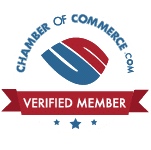How to Set Up a 401(k) Plan for Your Business and Employees
- ewalker223
- Feb 3
- 3 min read

A 401(k) plan is one of the most effective tools to help employees save for retirement while providing businesses with a competitive advantage in attracting and retaining top talent. Whether you're a business owner looking to establish a plan for your team, or an employee considering how to take advantage of it, understanding how to set up and utilize a 401(k) is crucial.
Setting Up a 401(k) Plan for Your Business
As a business owner, offering a 401(k) plan can significantly improve employee satisfaction and retention, making it a critical component of your employee benefits package.
Choose a 401(k) Plan Type: There are two primary types of 401(k) plans to consider:
Traditional 401(k): Pre-tax contributions, which reduce your taxable income.
Roth 401(k): Contributions are made with after-tax dollars, but withdrawals in retirement are tax-free.
Some companies may choose to offer both options.
Select a Plan Administrator: You’ll need to choose a financial institution or third-party administrator (TPA) to manage the plan. Look for one with experience in handling retirement plans and providing support to both employers and employees.
Determine Contribution Limits: For 2025, the IRS allows employees to contribute up to $23,000 to their 401(k) plan (with additional catch-up contributions for those 50 and older). Employers can also contribute, up to certain limits.
Employer Matching Contributions: Many employers choose to match employee contributions, either fully or partially. While matching contributions are not required, they are a powerful incentive for employees to participate in the plan.
Plan Design and Fees: Work with a plan administrator to decide on vesting schedules, fees, and how the investment options will be structured. Many businesses offer a simple vesting schedule where employees become fully vested after a set number of years.
Compliance and Reporting: Employers must ensure they comply with ERISA (Employee Retirement Income Security Act) guidelines, and annual reporting requirements to the IRS and Department of Labor.
Setting Up a 401(k) as an Employee
As an employee, participating in your employer's 401(k) plan is one of the best ways to save for retirement. Here’s how to get started:
Enroll in the Plan: Once your employer offers a 401(k) plan, you may want to enroll. Your employer will provide information on the plan and how to sign up.
Choose Your Contribution Amount: You can choose to contribute a percentage of your salary to your 401(k). Some employers also offer automatic contribution enrollment, meaning a portion of your paycheck is contributed automatically unless you opt-out.
Decide Between Traditional or Roth 401(k): Depending on your financial goals and tax preferences, you can choose between a Traditional (tax-deferred) or Roth (after-tax) option.
Select Your Investment Options: Your 401(k) plan will offer various investment choices—such as mutual funds, target-date funds, and more. Typically, these choices range from low-risk to high-risk, depending on your retirement timeline and risk tolerance.
Take Advantage of Employer Matching: If your employer offers a matching contribution, take full advantage of it! Contributing at least enough to receive the match is essentially free money for your retirement.
Monitor and Adjust Your Plan: It’s important to review your 401(k) periodically. Adjust your contribution amount, risk tolerance, or investment choices based on your changing needs, life events, and market conditions.
Conclusion
For businesses, offering a 401(k) plan is a significant benefit that can help attract and retain employees. For employees, setting up and contributing to a 401(k) is an essential step in securing your financial future. Whether you're an employer or an employee, understanding how to set up and maximize the potential of a 401(k) can have lasting benefits for years to come.




Comments